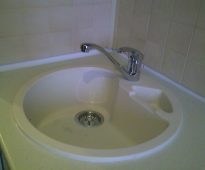 Simple tips to fix the sink to the tabletop
Simple tips to fix the sink to the tabletop
We do a banner of a kitchen corner the hands
Today, the kitchen in many apartments has become the most inhabited and favorite place: not only do they dine here with the whole family, but often receive guests, conduct business conversations, discuss the latest news with their neighbors. That is why the kitchen corner that adorns most kitchens quickly loses its attractive appearance: the fabric on the seats wears down, becomes faded, begins to tear. Structural elements loosen, become fragile.
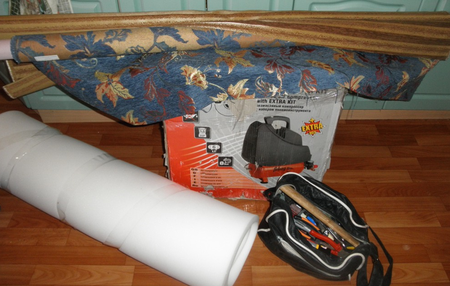
Although hauling furniture is considered to be a simple matter, nevertheless, it is important to have all the necessary tools at hand.
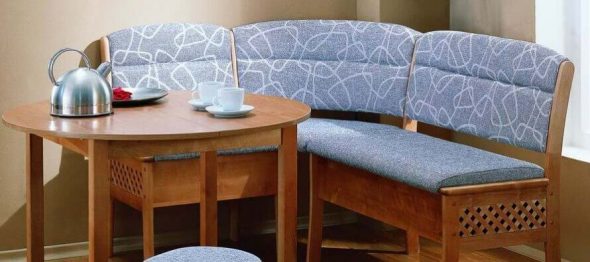
The kitchen corner that adorns most kitchens quickly loses its attractive appearance: the fabric on the seats wears down, becomes faded, begins to tear.
Doing their own business and kitchen evaporation, which adversely affect the strength of the material from which the seat and back, as well as the condition of the filler. He is gradually saturated with moisture, falls down, loses softness and elasticity, and this means that the kitchen corner needs urgent help.
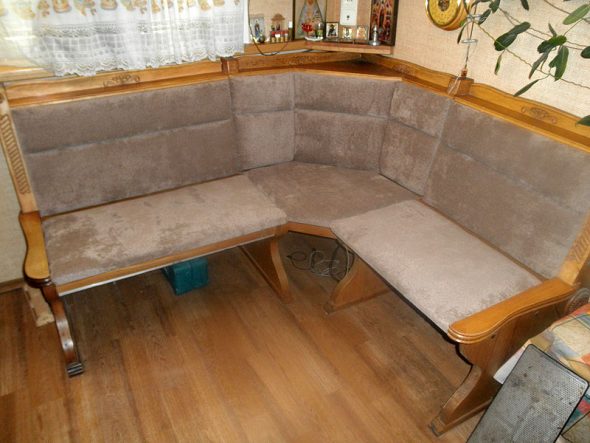
The kitchen corner that adorns most kitchens quickly loses its attractive look.
It can be done by inviting a specialist who will perform all restoration and repair work. But it will bring great joy to households if the home craftsman does the waist of the kitchenette with his own hands.
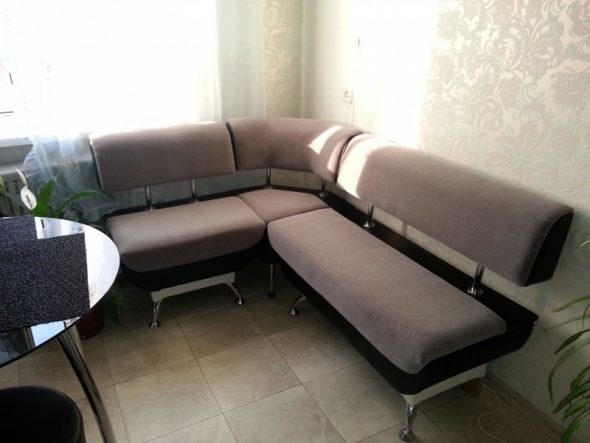
Foam during the restoration of kitchen corners is traditionally used as a filler.
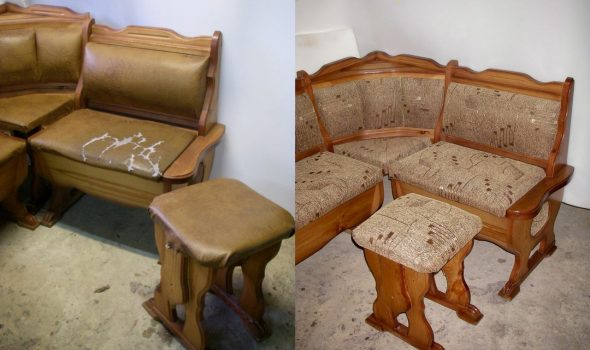
Other tools may be needed to carry out restoration work, but their use will depend on their complexity.
Content
Benefits of self-made repairs
The restoration and restoration work of the kitchen corner, due to its simple construction, is not difficult, not only for an experienced but even for a novice home craftsman. He quickly mastered the wisdom of the constriction of furniture in the kitchen. But in addition to pride in the self-performed work and the admiration of the home, repair their own hands has other advantages:
- significant savings in the family budget;
- fixing the skill of repair;
- the ability to plan the time of work;
- choice of material for upholstery to your liking.

Today, the kitchen in many apartments has become the most inhabited and favorite place.
We determine the design and construction
Kitchen corners vary in size and configuration. When reconstructing furniture, you can use your own design solutions and even try to make structural changes. Improve the design of the kitchenette, make the element of freshness and comfort help:
- use of material for backs and seats of various, possibly - contrasting colors;
- changing the overall shape of kitchen furniture;
- the use of leatherette with decoration of the backs with decorative buttons.
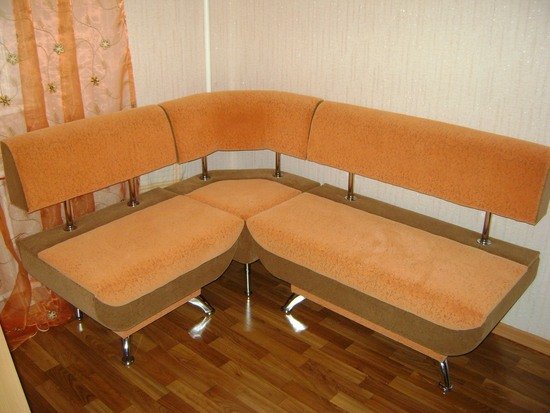
He is gradually saturated with moisture, falls down, loses softness and elasticity, and this means that the kitchen corner needs urgent help.
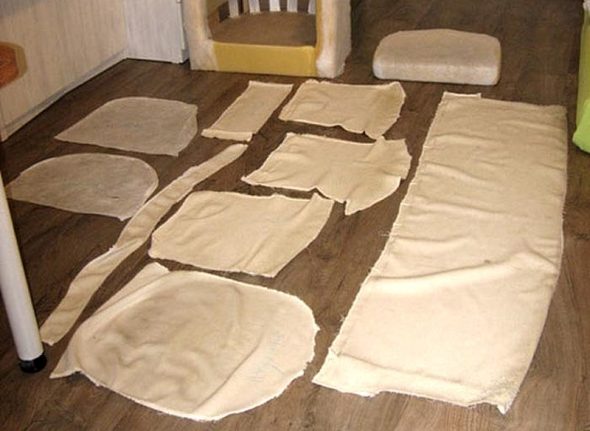
Getting to the waist of the kitchen corner, you need to clearly consider the procedure and follow the plan.
No less effective can be a partial change in the usual design, which can be achieved by:
- changing the configuration of the dining table;
- use of wooden panels on the back of the sofa;
- applications for the worktop glass, plastic, marble;
- alterations of chairs into light elegant stools;
- rejection of semi-soft seats and backs and the use of a fully wooden base;
- manufacturing of original armrests and semi-soft rollers and others.
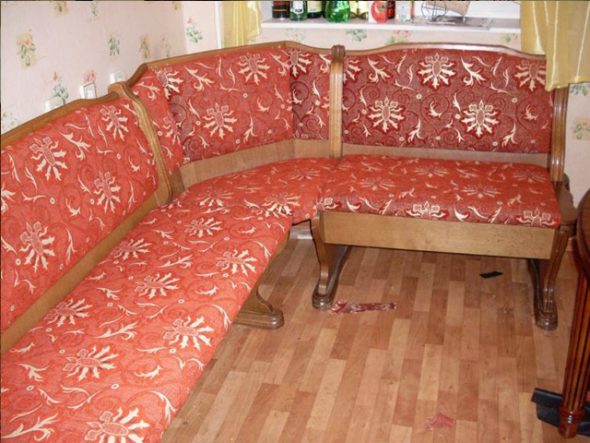
But it will bring great joy to households if the home craftsman does the waist of the kitchenette with his own hands.
Necessary materials
To implement the plans for the restoration of the kitchenette in a short time and to enjoy work, you need to make sure that all the necessary materials are prepared in advance. The master will need:
- upholstery
- foam rubber
- cardboard
- plywood
- glue
- fittings.
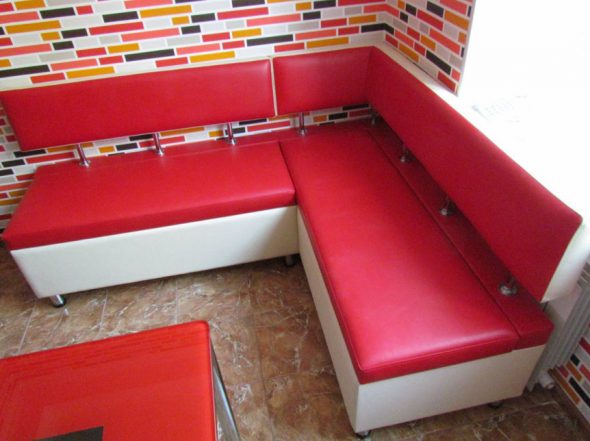
Significant savings in the family budget.
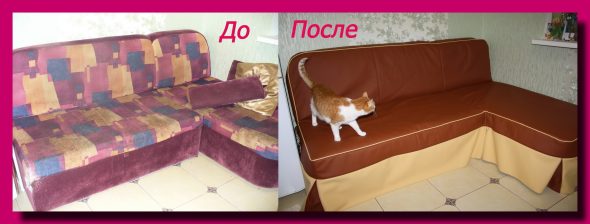
Many home craftsmen believe that to make the waist of the kitchen corner is half the battle.
Among the material for upholstery, jacquard, artificial leather, velor, tapestry, flock are most popular. Genuine leather is also used for the waist, but it is the most expensive, although almost the most durable. To make the fabric last longer, you need to give preference to a dense and soft material.
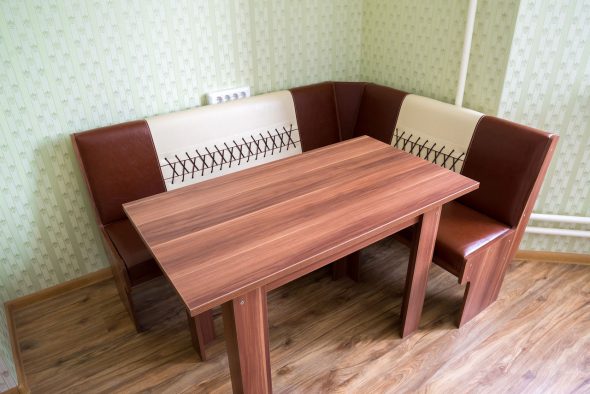
Among the material for upholstery, jacquard, artificial leather, velor, tapestry, flock are most popular.
Foam during the restoration of kitchen corners is traditionally used as a filler. Moreover, the tighter it is and the taller it is, the larger and more comfortable the seats and backrests will be.
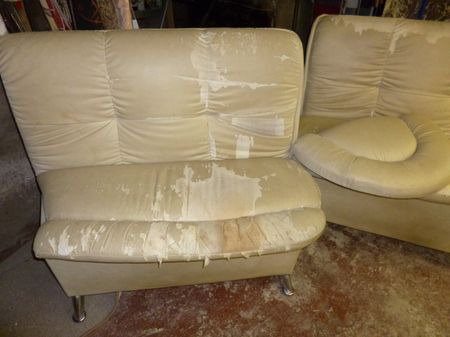
Doing their job and kitchen evaporation, which adversely affect the strength of the material.

It is necessary that it was not only durable, but also pleasing to the eye, uplifting and creating a cozy, kind atmosphere.
Furniture cardboard is used to align the seams, and plywood may be needed to replace the framed elements of the frame.
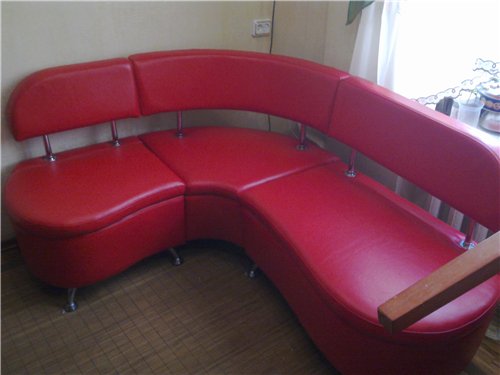
To implement the plans for the restoration of the kitchenette in a short time and to enjoy work, you need to make sure that all the necessary materials are prepared in advance.
Glue will need a special one: it is needed for sizing foam rubber.
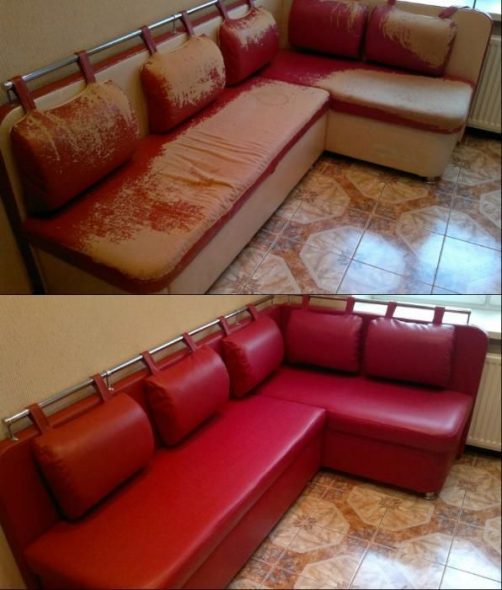
Kitchen corners vary in size and configuration.

For the decor, you can use a variety of techniques.
Required Tools
Although hauling furniture is considered to be a simple matter, nevertheless, it is important to have all the necessary tools at hand.
- antistepler - to remove staples from furniture, although they use a regular knife;
- scissors for trimming fabric;
- hammer and mallet;
- machine for sewing covers;
- rozhkov keys for dismantling the frame;
- furniture stapler for mounting new upholstery;
- pincers;
- crayons and pencil.

Improve the design of the kitchen corner by using the waist.
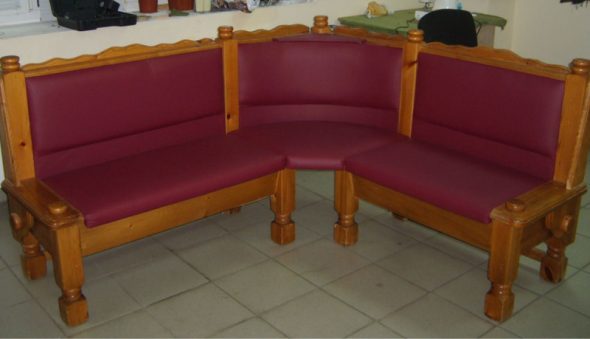
Bring furniture can decorating restored furniture.
This is the minimum and necessary set of tools, without which it is indispensable during the restoration and renovation of the kitchenette. Other tools may be needed to carry out restoration work, but their use will depend on their complexity.

The use of material for the backs and seats of different, perhaps - in contrasting colors.

The use of various methods of decoration, including with the help of ornaments made of foil, inserts made of genuine leather and suede.
Manufacturing process: step by step instructions
Getting to the waist of the kitchen corner, you need to clearly consider the procedure and follow the plan. Works are performed as follows.
| Type of work | Description |
| Removes old upholstery | Anti-stapler or knife carefully remove the brackets holding the upholstery. |
| Old filler removed | It is usually glued to a wooden or plywood base.Removed quite simply, the remnants of scrape with a knife. |
| Patterns are made for the waist of the seat and backrest | For them, fit thick paper, but better - thin cardboard. Making patterns is not difficult: if the old upholstery is carefully removed, it needs to be straightened (or ironed) and cut around, including allowances. Cutting the template and the fabric for the stitching should be careful not to spoil the material. If the old fabric is damaged, you can still use it, but you need to work with it very carefully.
|
| Sewing covers | They can be made by hand, but it’s a long time and not easy, because the fabric for them is tight, and it’s hard to sew with hands. Therefore, it is best to use a sewing machine.
|
| Strengthening foam | To do this, with a construction knife or scissors on the pattern, made of thick paper or thin cardboard, foam elements are cut, which will make the backrest and the seat soft. The base is coated with glue, on which foam rubber “sits down”.
|
| Strengthening covers with new upholstery | They gently pull on the seats and backs and secured with staples using a stapler. It is worth paying attention to the accuracy of fixing the covers, so the work must be done slowly. |
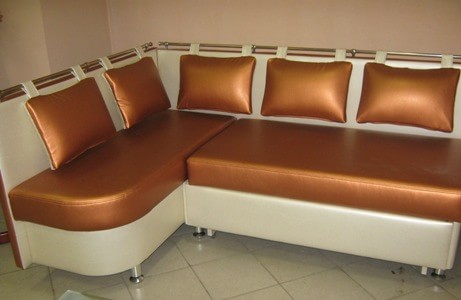
The use of leatherette with the decoration of the backs with decorative buttons.
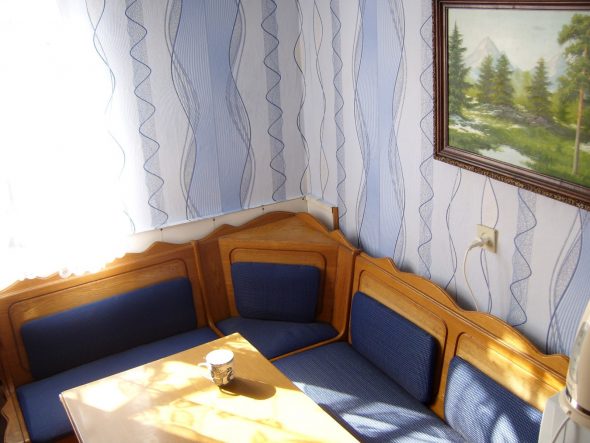
Using decoration methods that depend only on aesthetic preferences and ideas about beauty and convenience.
The final stage - decorating
Many home craftsmen believe that to make the waist of the kitchen corner is half the battle. It is necessary that it was not only durable, but also pleasing to the eye, uplifting and creating a cozy, kind atmosphere. It can be added by decorating restored furniture. And here - there are no limits of fantasy; besides, the rest of the household can join this exciting activity. For the decor, you can use a variety of techniques:
- decorating the backs of sofas or chairs by decoupage:
- decorating pillows in multi-colored covers;
- the use of pillows and semi-soft rollers as backs and armrests of sofas, if the corner is moved close to the wall;
- the use of blankets as an additional design;
- Ornaments cut from thin plywood and painted in accordance with the pattern or simply opened with varnish can be carefully glued or nailed with small studs;
- the use of various methods of decoration, including with the help of ornaments made of foil, inserts made of genuine leather and suede;
- making capes on chairs and sofas in the style of macrame or knitted,
- decoration of self-made rollers with tassels and fringe,
and other methods of decoration, which depend only on the aesthetic preferences and ideas about beauty and convenience.
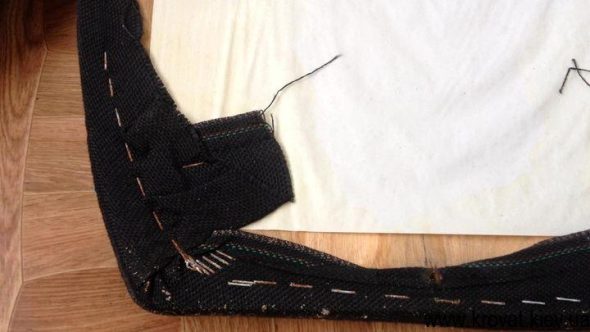
A partial change in the usual design can also be no less impressive.
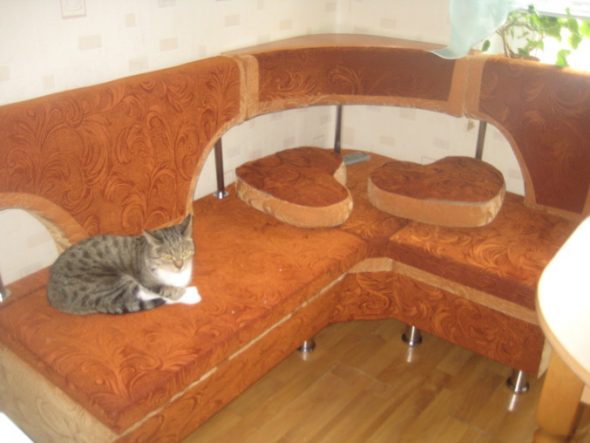
You can use the decoration of self-made rollers with tassels and fringe.
VIDEO: Repair of the kitchen corner, hauling furniture fabric.
 Simple tips to fix the sink to the tabletop
Simple tips to fix the sink to the tabletop
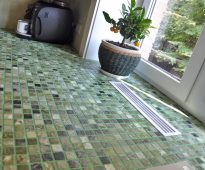 We update the tabletop in the kitchen with our own hands: ways, materials, tools
We update the tabletop in the kitchen with our own hands: ways, materials, tools
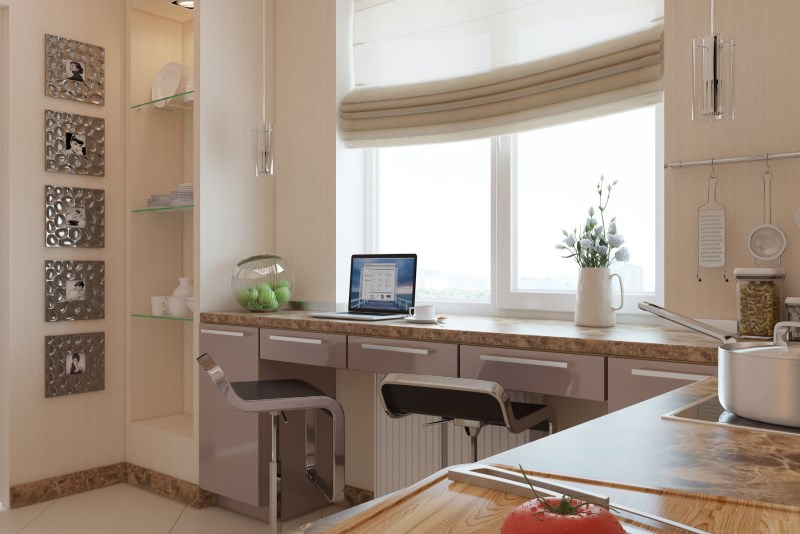 Sill-countertop in the kitchen with their own hands.
Sill-countertop in the kitchen with their own hands.
 Making the original kitchen with your own hands from furniture panels
Making the original kitchen with your own hands from furniture panels
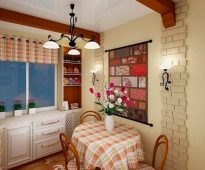 Tips for decorating the wall in the kitchen near the table
Tips for decorating the wall in the kitchen near the table
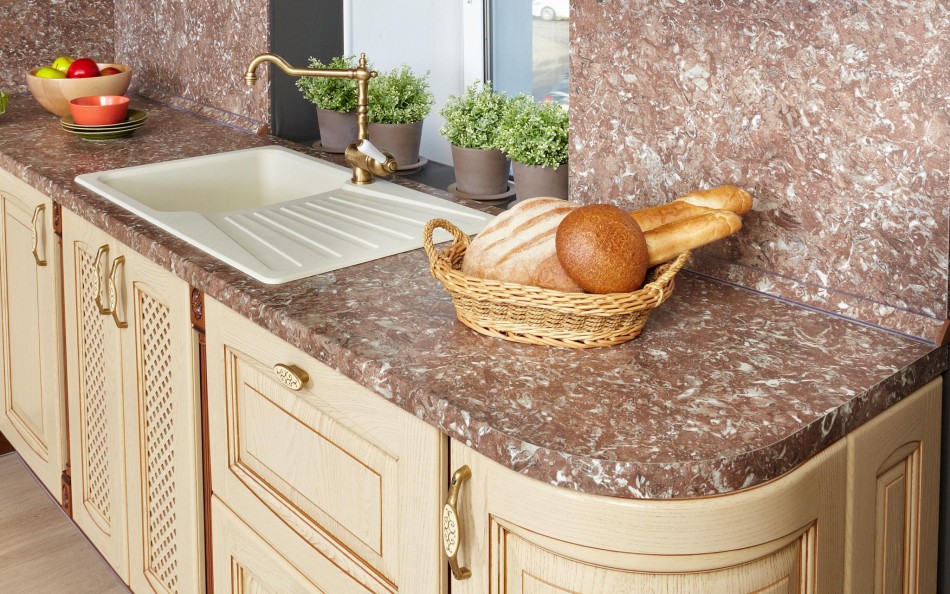 Liquid stone for countertops. What is it and what does it combine with?
Liquid stone for countertops. What is it and what does it combine with?






